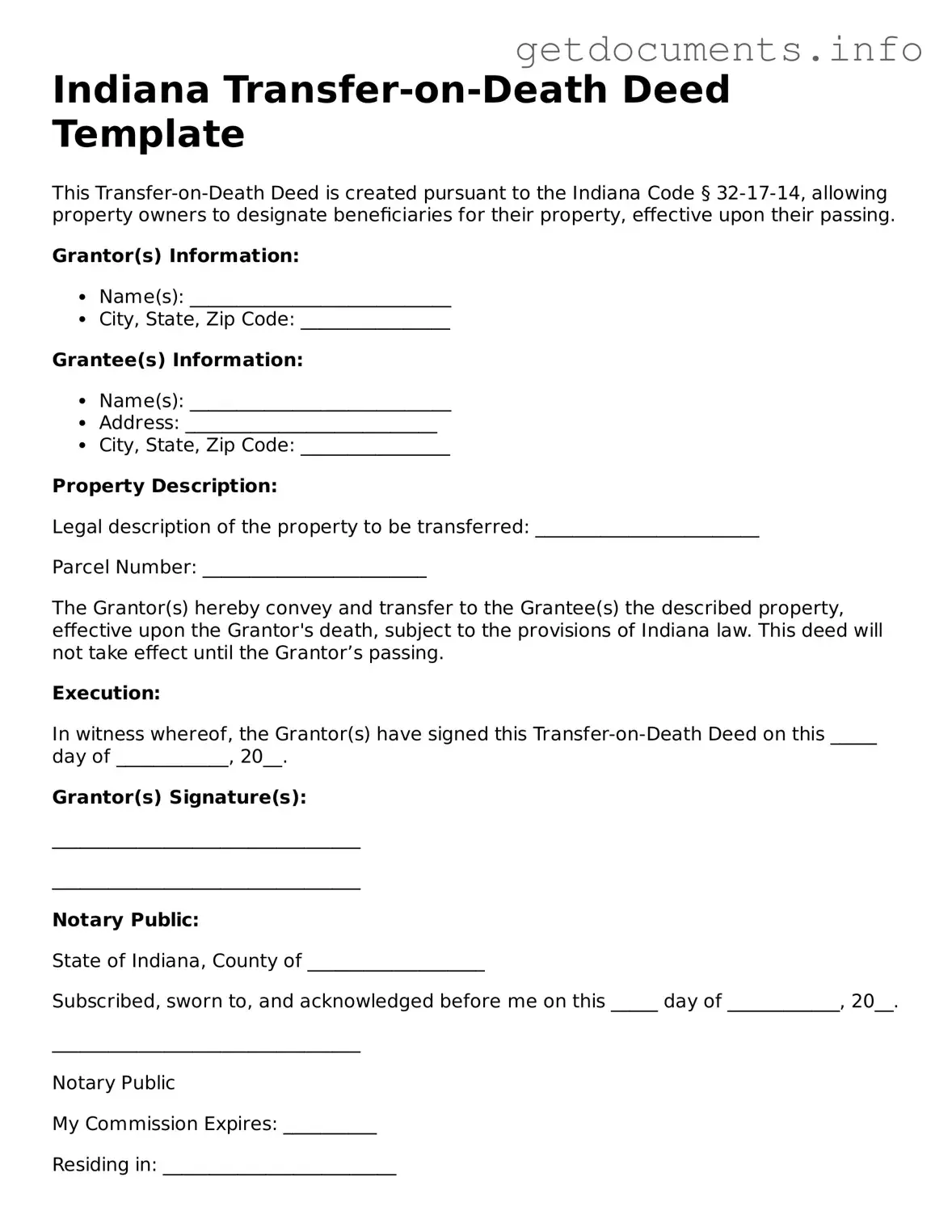Free Transfer-on-Death Deed Template for Indiana
The Indiana Transfer-on-Death Deed form allows property owners to transfer their real estate to beneficiaries upon their death, without the need for probate. This simple and effective tool ensures that your property goes directly to your chosen heirs, streamlining the transfer process. To get started on securing your property for the future, fill out the form by clicking the button below.
Access Transfer-on-Death Deed Editor
